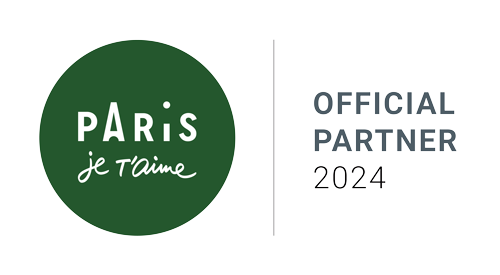Marseille,
the most masculine city in France
the most masculine city in France
What makes us say that Marseille is the most masculine city in France? We know that Marseille is a strong Mediterranean port with austere forts and the very famous Castle If. It is a home of passionate football players such as Zinedine Zidane. It is a whole galaxy of chefs who run the best restaurants in France. Marseille is also closely intertwined with art, ballet and architecture. Today we will share these stories with you.
We want to thank Madame Corinne FREANI from Convention Bureau of Marseille for the beautiful photographs.
We want to thank Madame Corinne FREANI from Convention Bureau of Marseille for the beautiful photographs.
Marseille is famous for its ballet school. Мarius Ivanovich Petipa, a Frenchman who made Russian ballet the best in the world, was born in Marseille where he learned the ballet art from his father. The National ballet of Marseille was founded in 1972 by ballet master Roland Petit, who studied ballet under Serge Lifar. He worked on his ballets jointly with Yves Saint Laurent, Serge Gainsbourg and Maya Plisetskaya. Another native of Marseille in the photo below is Maurice Béjart, one of the greatest choreographers of the 20th century.

It was in Marseille that the "Radiant City", the whole block of houses built by Le Corbusier, emerged. It became the icon of architectural building from America to the Soviet Union. There is a terrace with a swimming pool on the roof and a garden around the house designed by the same Le Corbusier. One can lodge and have lunch in the "Radiant City" – there is a hotel Le Corbusier and a restaurant Le Ventre de l'Architecte, which translates as "Belly of an Architect".

Marseille continues to be a design center. For example, Hotel C2, located in a 20th century private mansion, may be of particular interest, because it has the most well-known chairs of the last century, the authorship of which belongs to Charles Rennie Mackintosh, Frank Lloyd Wright, Gerrit Rietveld, Marcel Breuer and Le Corbusier.
Marseille is a sea city famous for its seafood. Marseille cuisine is primarily well known for its fish soup called Bouillabaisse, which is made of a dozen sea fish such as scorpion fish, John Dory, Sea Robin, bream, salmon, haddock, mullet, Saint Peter's fish.


In addition to bouillabaisse, you need to taste the oysters that in Marseille are always served with Provencal sauce of mayonnaise and garlic known as "Aioli". One of the most famous seafood restaurants is Toinou, which the locals call the "King of seashells".

The main drink in Marseille is pastis, a liquor made of anise and licorice, that was introduced a hundred years ago to replace forbidden absinthe. Serge Gainsbourg esteemed this drink so much that today a double portion is called in his honor.

Chef Gérald Passedat runs the only restaurant in Marseille that has three stars in the Guide Michelin - Le Petit Nice Passedat. He also operates the gourmet restaurant Le Mole Passedat located on roof of the Museum of European and Mediterranean Civilizations.

The hotel-restaurant Le Petit Nice Passedat is situated on the Ledge of President J.F. Kennedy (Corniche Kennedy), that is very popular among jogging fans, with sea on the one side and luxurious villas on the other. There is the longest bench in the world running without breaks alongside the whole ledge for almost 3 kilometers! The Ledge of Kennedy practically connects the Old Port and the Prado Beach, where the residents of Marseille engage in water sports activities.

If we continue our course beyond the Prado beach getting further from Marseille, we will be able to visit the natural wonder and the famous Mediterranean fjords - the Calanques. The name of the cliffs comes from the Occitan word "calanca" meaning a steep slope, a cove.



A typical sport in Marseille is petanque, throwing balls towards a small target ball. The indispensable attribute of every petanque club is a picture of Fanny. As legend has it, Fanny was a waitress at a little restaurant next to which the local people played petanque. She felt sorry for the losing players and tried to encourage them in different ways. Once a city mayor who was least favorite among residents, including Fanny, ended up losing a game with a crushing score 0:13. The mayor made an attempt to hug and kiss the girl but Fanny did not want to reciprocate and evaded his embrace in such a way that mayor's kiss landed on Fanny's lower back. Since that time, the game of petanque has a mandatory requirement: had lost without scoring a point – kiss Fanny.


Marseille has amazing architectural buildings. One of them, the Palace Longchamp (Palais Longchamp), was built to commemorate the opening of the Marseille canal, through which the drinkable water became available to the local community. Today the Museum of Fine Arts, based at the Palace, displays the paintings of Gustave Courbet, Claude Vernet and Jean-François Millet.


L'Estaque, the northwest neighborhood of Marseille, was a favourite place among painters. Auguste Renoir called the landscapes of L'Estaque the most beautiful in the world. The first to discover this former fisherman village was Paul Cézanne, who was often visited here by Monet and Renoir. It is to L'Estaque that we owe the emerging of cubism. Having seen the landscapes of L'Estaque at the Cézanne exhibition, Georges Braque set out here. His painting "The Viaduct at L'Estaque" became one the first artworks of the new artistic movement.

Georges Braque. The Viaduct at L'Estaque
In conclusion we would like to present the mural of the Marseille painter Jean-Baptiste Olive, where he depicted his native city and which may be seen in Paris at … the railway station! He was the painter, who decorated the renowned restaurant Le Train Bleu at the Lyon railway station in Paris, with his enormous mural about 100 meters long, representing the cities at which the train stopped in 1900 on the way from Paris to Menton.

Jean-Baptiste Olive. Marseille.
Fragment of the mural in the restaurant Le Train Bleu at the Lyon railway station in Paris
Fragment of the mural in the restaurant Le Train Bleu at the Lyon railway station in Paris

